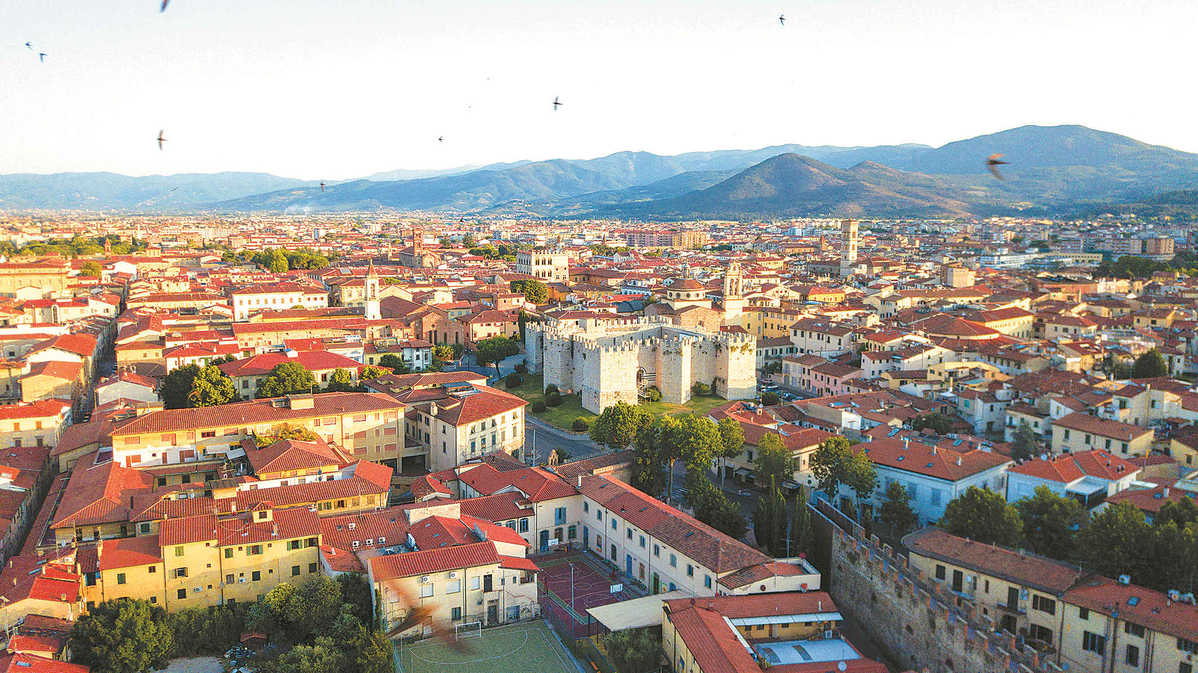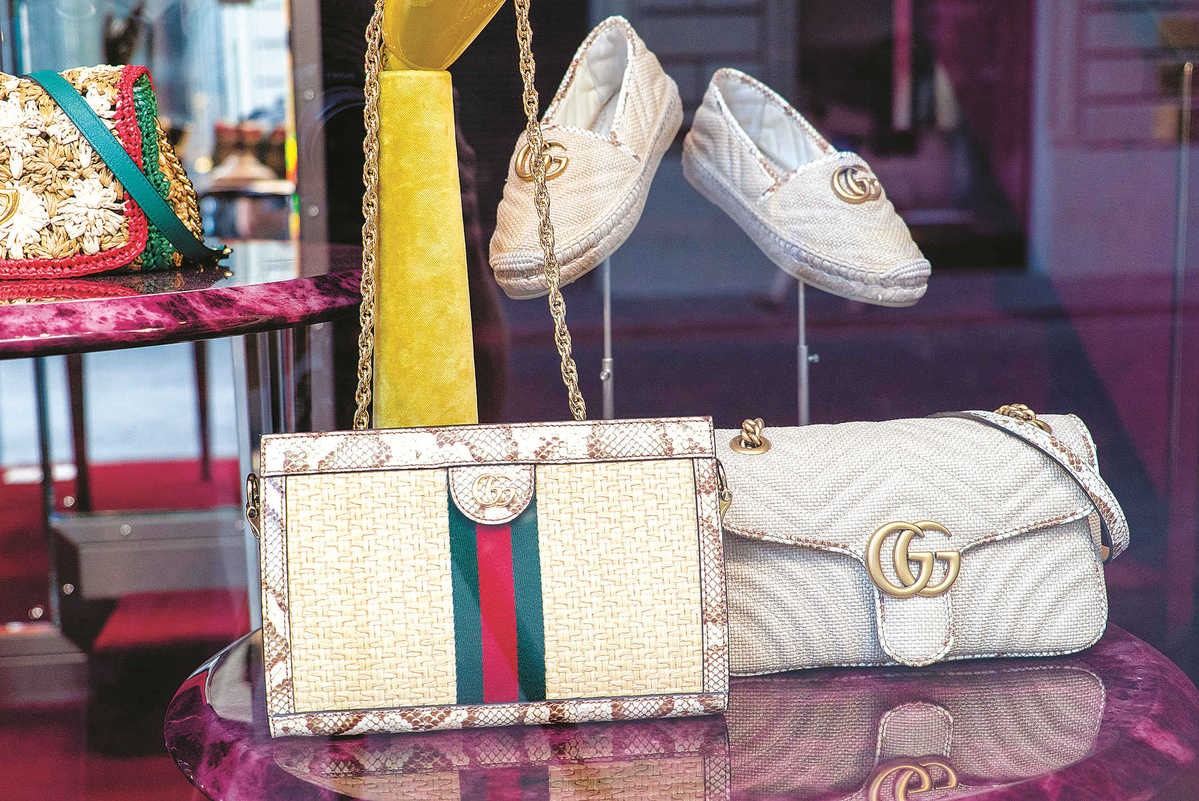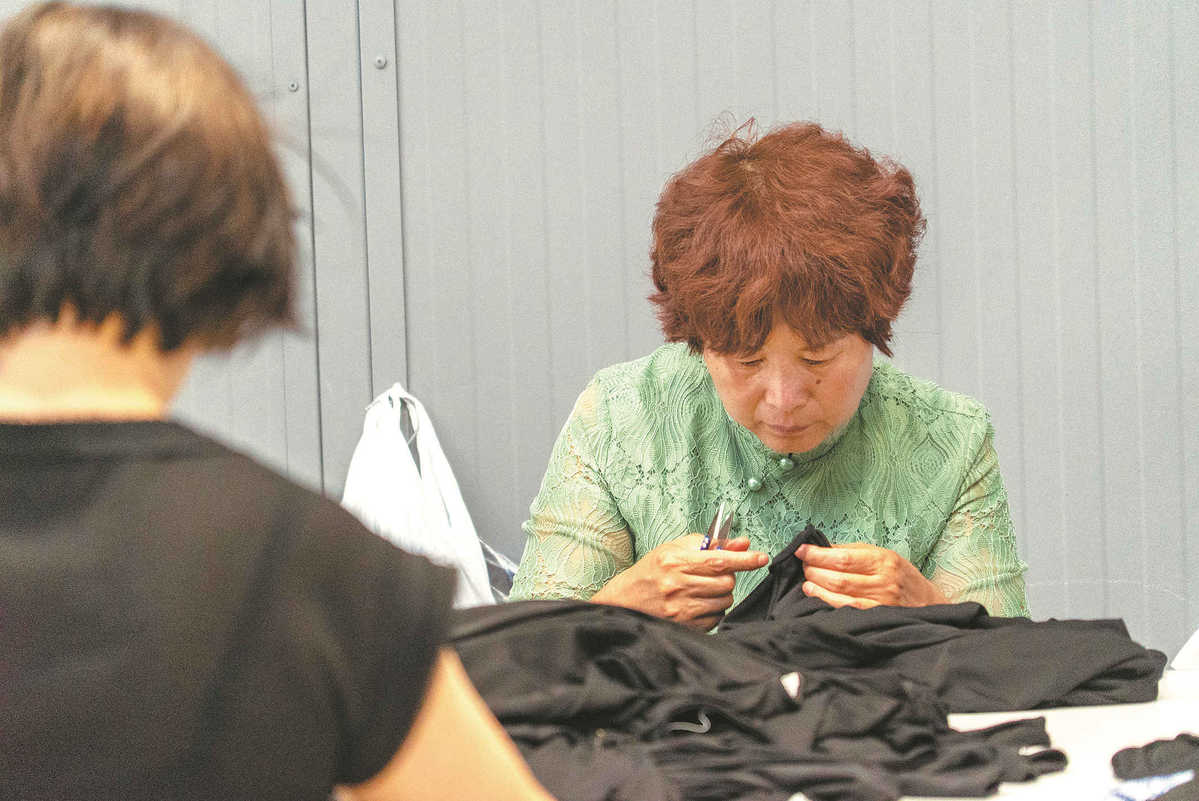
The idyllic countryside in Qingtian county, near Wenzhou in Zhejiang province. DJ CLARK/CHINA DAILY
For centuries, Prato has stood as a prominent center of Italian fashion production, nestled within the picturesque central region of Tuscany, celebrated for its rich artistic heritage.
However, in the 1990s, this medieval city faced a pressing challenge — scarcity of labor and inability to keep pace with the rapid changes in the fashion industry.
Consequently, a wave of Chinese immigrants flocked to the city, answering the call to collaborate with their Italian counterparts for swiftly producing affordable garments.
As a result, Prato now boasts one of the largest concentrations of Chinese immigrants in Europe, with one in four originating from China.
Many of them actively contribute to the realm of "fast fashion", or as it is known in Italian, pronto moda.
One such person is Xu Qiulin, whose connection with Prato goes back to 1989 when he embarked on a career in fast fashion.
Recounting his modest beginnings, Xu said his first workshop occupied an estimated area of 150-200 square meters in the city, and the space was divided into five or six rooms, each equipped with around five or six sewing machines, sometimes even a dozen.
"I had a team of two or three workers, and I actively participated in material sourcing and assisting them with their tasks," he said. "Communication posed a challenge due to my limited proficiency in Italian language.
"When I first arrived, there were very few Chinese, only about five to six hundred. However, the Chinese population has now reached 50,000."
His story highlights the significant growth of the Chinese community in Prato over the years.

An aerial view of the city of Prato in Tuscany region, central Italy. DJ CLARK/CHINA DAILY
In 2000, he ventured beyond the fast fashion industry and established a midrange clothing company called Giupel, which does some of its own designs.
Over time, the Chinese community in Prato has experienced a notable transformation, embracing the entrepreneurial spirit of their hometown, Wenzhou in Zhejiang province, while carving their own path.
"Wenzhou people are very smart," Wang Zengli, a Chinese business owner in Prato, said. "After working in the Italian factories for a while, they realized it wasn't difficult to operate such factories.
"Gradually, between 2000 and 2006, they all became their own bosses. Fast fashion reached its peak between 2005 and 2010. Almost the whole of Europe flocked here to place their orders."
The influx of Chinese immigrants into Prato brought about economic growth, but also gave rise to feelings of grudge among some locals.
As the Chinese population continued to increase, these issues became politicized, with right-wing politicians making promises to take stronger measures against them.
Lamberto Gestri, former president of the greater Prato Province, said: "Prato has a long history of immigration, starting with internal migration within the Tuscany region, where people from other parts of Tuscany moved to Prato in search of employment opportunities. Later on, immigration from both the northern and southern parts of Italy also contributed to the city's diverse population."
But the arrival of the Chinese community brought a unique dynamic to Prato, Gestri said.
"The Chinese community has a distinct vision and mentality that differs from the Italian population. They have a strong emphasis on work and productivity," he said. "These cultural differences have occasionally led to conflicts, as the Chinese way of doing business and their work ethic have posed challenges for Italian industries trying to compete. These conflicts have been one of the reasons for tensions between the two communities."
Daniele Cologna, a professor at the University of Insubria and an expert on Chinese immigrants in Italy, said the blame for financial losses experienced by businesspeople in Prato lies with the Italians themselves.
"The fact that Italians were losing money had nothing to do with the Chinese; it had to do with the fact that the Prato garment district was unable to find a way to relaunch its business model in a globalized economy, and that is not on the Chinese, it's on us, it's on Italians," he explained.

A Chinese worker crafts a high-end luxury handbag at a Chinese-owned factory in Florence, Italy. DJ CLARK/CHINA DAILY
Ancestral lineages
Interestingly, as highlighted by Cologna, the majority of Chinese residents in Prato can be traced back to ancestral lineages originating from the vicinity of the Chinese city of Wenzhou.
Yan Xiaohai, an officer of the Overseas Chinese Bureau in Qingtian, a small town near Wenzhou, said Zhejiang province has witnessed four major waves of immigration to Europe, with the immigration from Qingtian playing a crucial role.
"It began in the late 19th century when opportunities arose through exhibitions," Yan said. "In 1911, a devastating flood struck the county, prompting people to seek new opportunities elsewhere, leading to an increase in immigration to Europe."
The first major wave of immigration occurred in 1925-30, ending with the onset of a worldwide economic crisis. World War II further slowed immigration for about 20 years.
The second significant wave began in the 1980s, after China's reform and opening-up.
Yan estimated that the population of Qingtian is about half a million, with approximately 300,000 individuals officially recorded as having emigrated to Europe, accounting for nearly 60 percent of the population.
"People from Qingtian were among the first Chinese immigrants to Europe, primarily due to the limited resources and opportunities in their small county," Yan said. "The lack of natural resources and limited space for agricultural work pushed the rural population, including the farmers, to seek better prospects abroad."
But why did a large number of people from Wenzhou choose to settle in Prato, a city 20 kilometers from Florence with a population of 200,000?
Zhang Yili, a professor of economics at Wenzhou University, whose research focuses on Wenzhou immigrants in Italy, said that in the late 1980s, the local youth in Prato showed less interest in working in their parents' textile workshops. Instead, they sought opportunities in larger cities, including Milan and Rome, which caused a decline in the development of the garment industry. This created a pressing need for a new labor force.

Exquisite luxury fashion items are showcased at a high-end store in Milan, Italy. DJ CLARK/CHINA DAILY
Because people from Wenzhou living in Europe are a tight-knit group and are willing to share information with each other, it was not long before word spread that Prato had launched new preferential policies to encourage more people to move there. Thus began their new journey.
"This is a very good opportunity for 'Wenzhou-nese', because many of them had gained experience in clothing manufacturing in Wenzhou, a city renowned for its expertise in this field," Zhang said.
"Upon arriving in Prato, they discovered that the local industry was similar to what they had been doing in their hometown or what their relatives were engaged in in places like France."
Wenzhou people were instrumental in the transformation of Prato from a textile-focused industry to a center of fast fashion, Zhang said.
"The Wenzhou model is famous for its specialization in the production of small-scale products for a large market. The people who made the community had a tendency to come together and form industry clusters based on shared interests and expertise," he said.
Drawing from their experience in China, he said, they brought their collective knowledge and skills to Prato. With their extensive background in shoes and clothing, they knew how to effectively transition from traditional textile manufacturing into pronto moda, he added.

A Chinese man measures materials for fast fashion garments in Prato. DJ CLARK/CHINA DAILY
Going upmarket
Made in Italy — these are more than just three words on a manufacturing label. They have come to represent quality. What makes "Made in Italy" so special that consumers are willing to pay a premium price?
Cologna from the University of Insubria said it is the combination of beauty, rich historical heritage and a certain form of elegance tied to a job well done by a fine Italian hand.
"But now, of course, we also have a fine Chinese hand working at it," he added.
Italians take the "Made in Italy" label seriously — so seriously that they even passed a law in 2009 saying companies can claim a "Made in Italy" tag only if products are designed, planned, processed and packaged on Italian territory. But the law did not put any restrictions on the workers who make the products. Workers did not have to be Italian, or even European.
For more than two decades, Chinese fast fashion factories in Prato have been operating, initially catering to the lower end of the Italian fashion market and providing affordable clothing to the masses across Europe. However, some Chinese factories are now breaking into the high-end market, manufacturing for reputed fashion houses such as Armani, Gucci and Prada.
Fu Fanghui, a first-generation Chinese immigrant, has made a name for himself as a producer of bags for prestigious Italian high-fashion brands. He emphasized the utmost importance of embracing a mindset that places the brand's quality above any short-term gains.
"You must prioritize quality as if it were your own life," he said. "Once you possess such a spirit, there is nothing you cannot achieve. Over time, these esteemed fashion houses have become increasingly convinced that we Chinese possess this remarkable spirit.
"It is not only our dedication to product quality that impresses them, but also our ability to seamlessly integrate their culture and concepts. This is particularly evident among the Chinese people, particularly those hailing from Zhejiang province, who readily assimilate these values with great enthusiasm."
Six out of 10 factories in Florence producing products for big Italian high-fashion brands are owned by Chinese entrepreneurs, Fu said.

Chinese women make fast fashion garments at a workshop in Prato. DJ CLARK/CHINA DAILY
The Chinese in Italy are not solely engaging in fast fashion or manufacturing for Italian brands. Some individuals have managed to break the glass ceiling and ascended to the upper echelons of Italian design.
Xu Yuejuan represents a striking departure from the prevalent perception of native Chinese involvement in the Italian fashion industry, which often revolves around fast fashion, assembly-line production, long work hours and cheap labor.
Xu has become the first native Chinese member of the esteemed Milan Fashion Club. Her fashion label, Delves-JK, is now mentioned in the same breath as industry icons such as Armani, Christian Dior and Louis Vuitton.
However, Xu's journey to the top tier of Italian design was not without its challenges, as she encountered bias along the way.
"When people see me, they often remark, 'You are not Italian', as if assuming that European designers are inherently superior," she said.
"There was a prevailing bias within the fashion industry that Chinese designers were only capable of imitation and copying. The perception was that our strengths lay primarily in replicating the work of others."
Xu emphasized the significance of originality in gaining recognition from European counterparts, saying: "When you create something unique and authentic, Europeans will undoubtedly acknowledge it. The key lies in your originality."
Xu also believes prioritizing quality is paramount.
"It is through maintaining impeccable quality within your brand that your reputation can endure and thrive over time," she said.